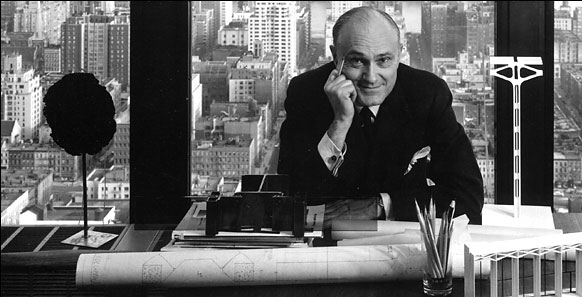Difference between revisions of "IDS Center"
| (6 intermediate revisions by 3 users not shown) | |||
| Line 1: | Line 1: | ||
<div style="text-align: center;"> | <div style="text-align: center;"> | ||
| − | ''' | + | '''80 South 8th St., Minneapolis (1973-Present)''' |
</div> | </div> | ||
| − | + | {{unprotected}} | |
{| {{prettytable}} | {| {{prettytable}} | ||
! | ! | ||
| Line 39: | Line 39: | ||
</div> | </div> | ||
| + | |||
| + | ---- | ||
| + | ==This entry is part of:== | ||
| + | == [[Minneapolis/St. Paul, MN: 100 Queer Places in Minnesota History, (1860-2010)]]== | ||
---- | ---- | ||
| Line 53: | Line 57: | ||
<small>(6)</small>Goldberger, Paul. "Philip Johnson, Architecture's Restless Intellect, Dies at 98" ''The New York Times'', 1/27/2005. | <small>(6)</small>Goldberger, Paul. "Philip Johnson, Architecture's Restless Intellect, Dies at 98" ''The New York Times'', 1/27/2005. | ||
| − | |||
| − | |||
Latest revision as of 02:02, 20 January 2012
80 South 8th St., Minneapolis (1973-Present)
| The IDS Tower in 1975. Photo by Nathaniel Liberman, Courtesy of the Minnesota Historical Society. http://collections.mnhs.org/visualresources/ |
The tallest building in Minnesota began as a mere 12-story plan in 1962, but Minneapolis architect Ed Baker joined John Burgee and the renowned Philip Johnson in 1969.(1) The three architects revised original plans and proposed a 57-story tower—25 stories higher than the nearby Foshay Tower, which was the highest building in the city at the time.
Architectural historians consider Phillip Cortelyou Johnson (1906-2005) as a pioneer in modern architecture. Working as an associate with Mies van der Rohe, he helped design New York’s Seagram Building—the “zenith of the International Style”(2)—in 1958.
Though he worked in an era of McCarthyism, gay bar raids, and frequent blackmail, Johnson’s homosexuality did little to affect his long professional career.(3) Rather, the architect’s “infatuation” with the Third Reich challenged his American success in the 1940s. The “gay intellectual elite”(4) of New York saved his reputation, and he went on to create many of the 20th century’s most important buildings—among them the twin cities’ most beloved skyscraper. |
Its revolutionary blueprint includes what Johnson called “zogs,” or jagged walls that permit 32 corner offices on each floor, and a shopping/public space named “Crystal Court”—where three skyways link to other buildings.(5) The site is, perhaps, best known nationally as where Mary Tyler Moore tossed her tam in 1970. The IDS Tower is likely our most famous landmark; it features in many films placed in or near the Twin Cities.
A man of privilege, a patron of the arts, and friend of Andy Warhol and Truman Capote, Johnson died at the age of 98. The great architect’s last gift to the world was the “Crystal Cathedral” in Dallas, home to a gay and lesbian congregation.(6) His partner of 45 years, David Whitney, died shortly after him in 2005.
"Philip Johnson in his New York office in 1957," by Arnold Newman. Courtesy of The New York Times: http://www.nytimes.com/ref/arts/JOHNSON-REF.html'
This entry is part of:
Minneapolis/St. Paul, MN: 100 Queer Places in Minnesota History, (1860-2010)
(1)According to the IDS center’s website: http://www.ids-center.com/
(2)Dupre, Judith. Skyscrapers. New York: Black Dog and Lethenthal Publishers, Inc., 1996. Page 50
(3)Kaiser, Charles. 'The Gay Metropolis: 1940-1996. New York: Houghton Mifflin, 1996. Page 42.
(4) Ibid.
(5)Kidder Smith, George Edward. Source Book of American Aerchitecture: 500 Notable Buildings from the 10th Century to the Present. New York: Princeton Architectural Press, 1996. Pages 556-57.
(6)Goldberger, Paul. "Philip Johnson, Architecture's Restless Intellect, Dies at 98" The New York Times, 1/27/2005.

